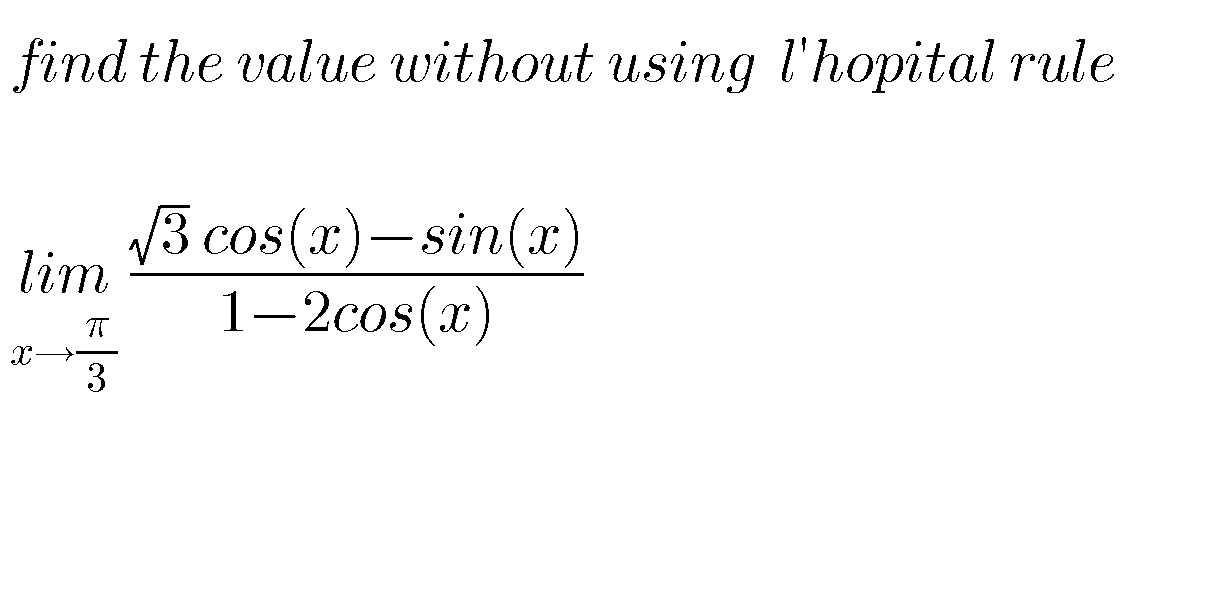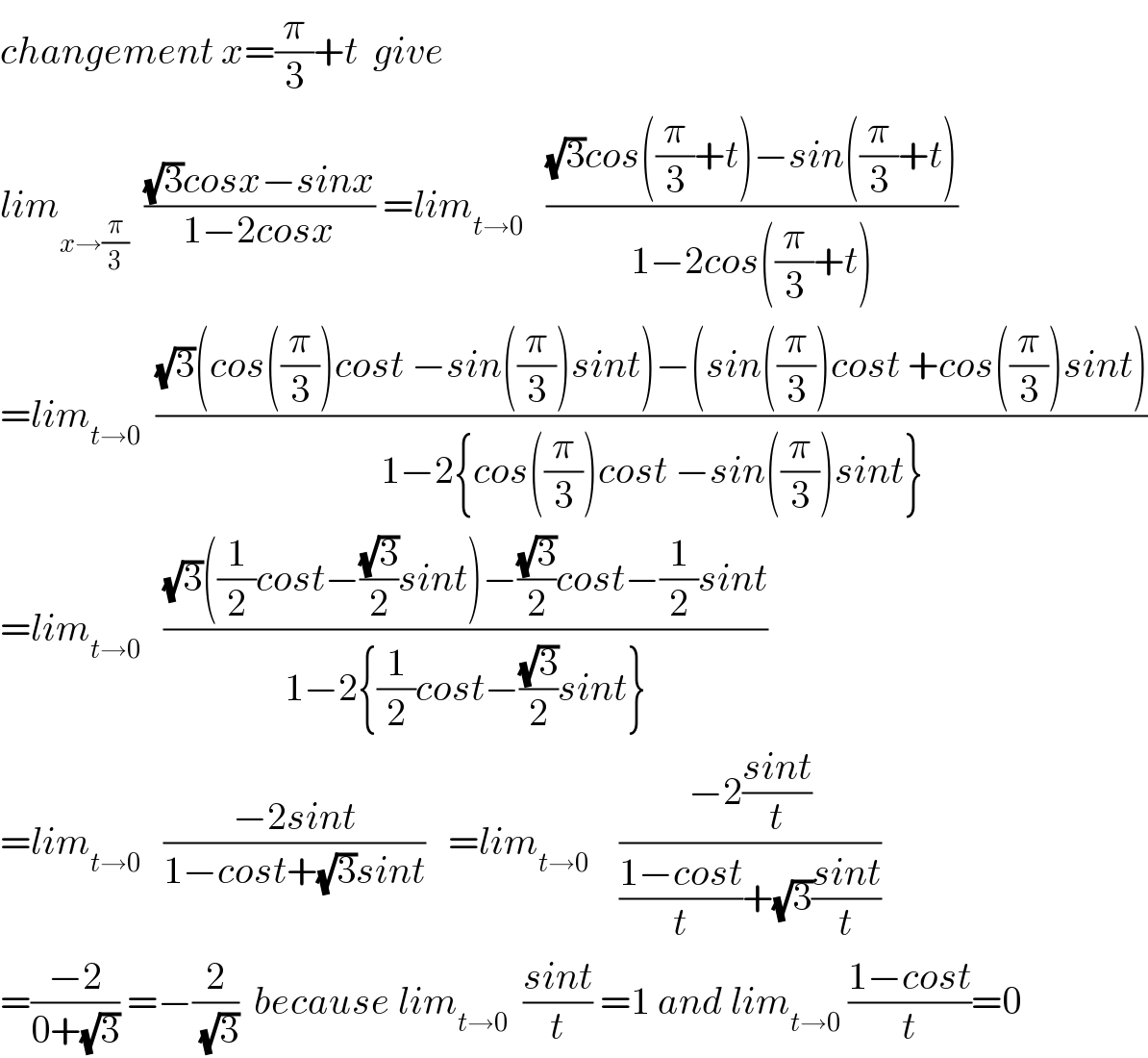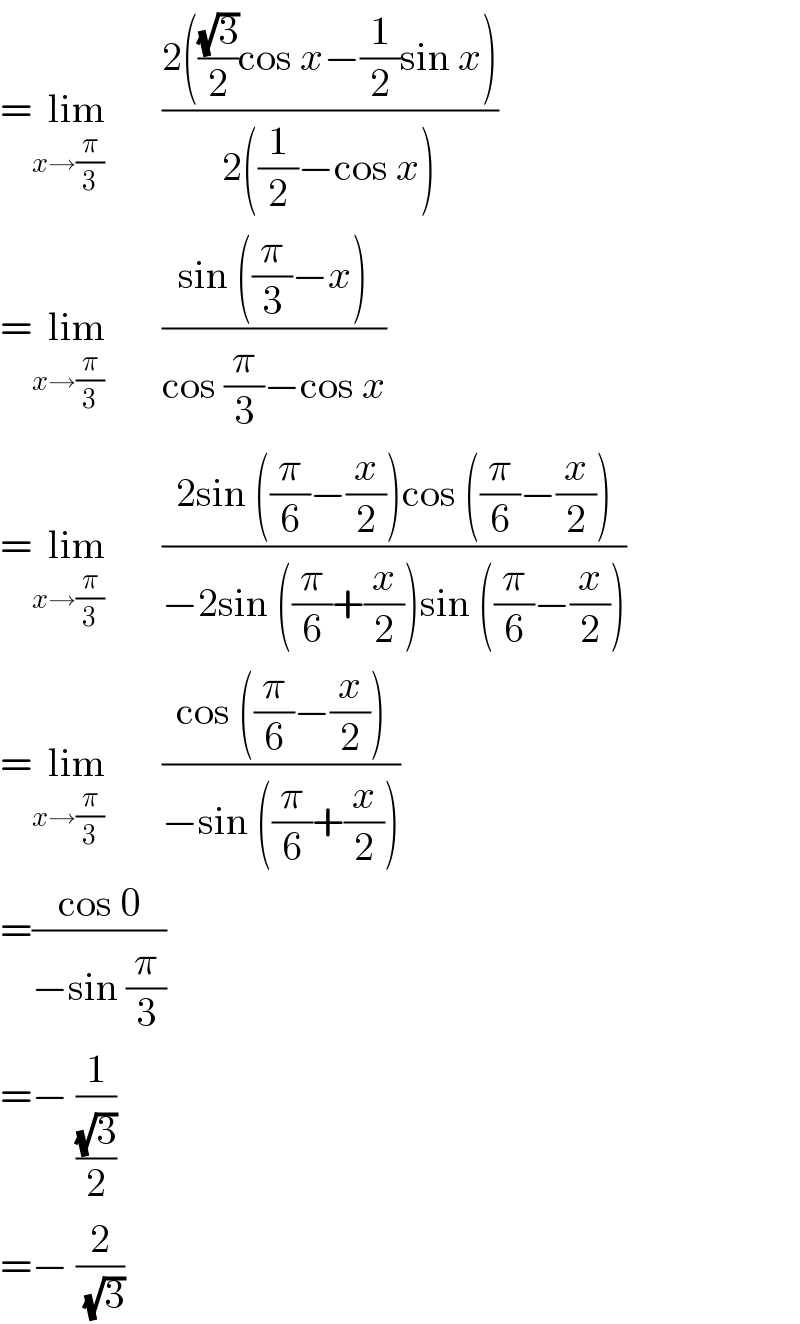
Question and Answers Forum
Question Number 72836 by aliesam last updated on 03/Nov/19

Commented by mathmax by abdo last updated on 04/Nov/19

Answered by $@ty@m123 last updated on 04/Nov/19

| ||
Question and Answers Forum | ||
Question Number 72836 by aliesam last updated on 03/Nov/19 | ||
 | ||
Commented by mathmax by abdo last updated on 04/Nov/19 | ||
 | ||
Answered by $@ty@m123 last updated on 04/Nov/19 | ||
 | ||
| ||